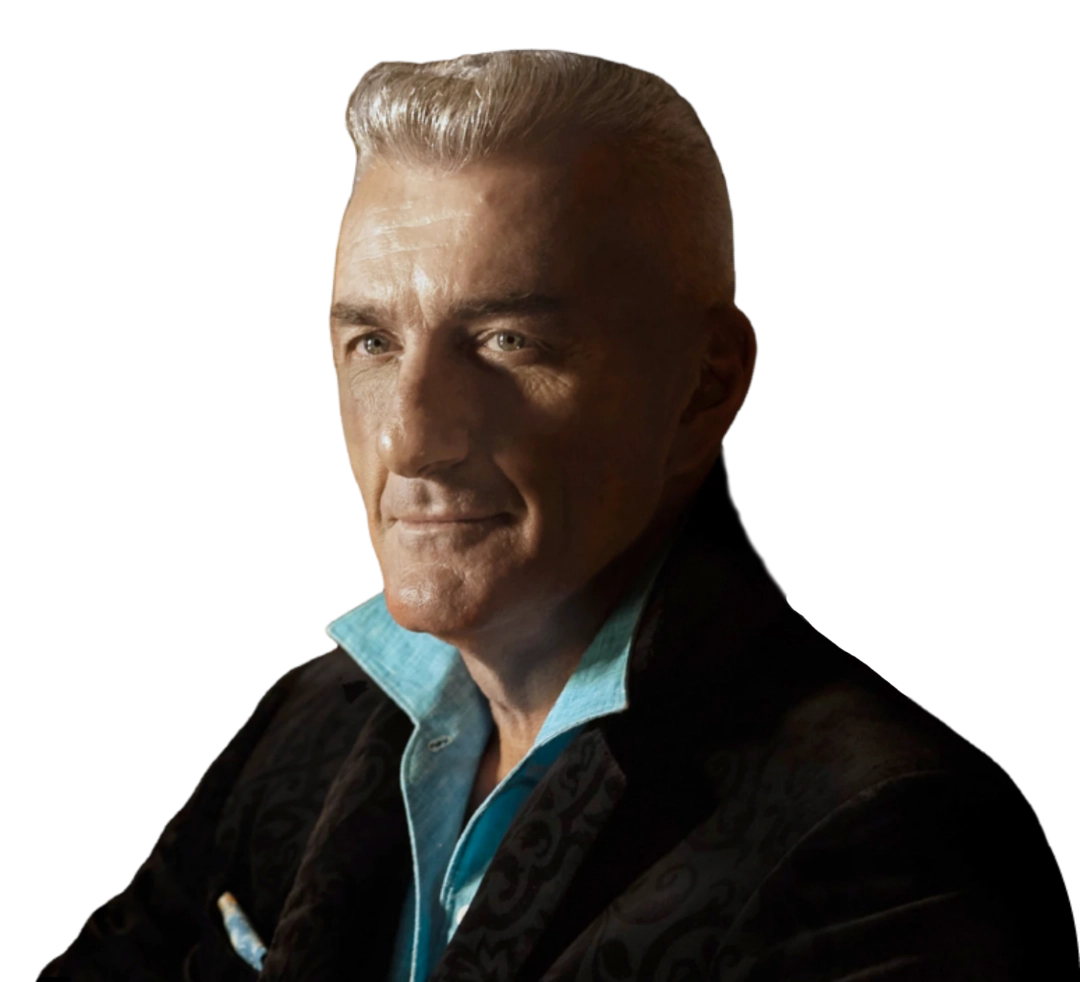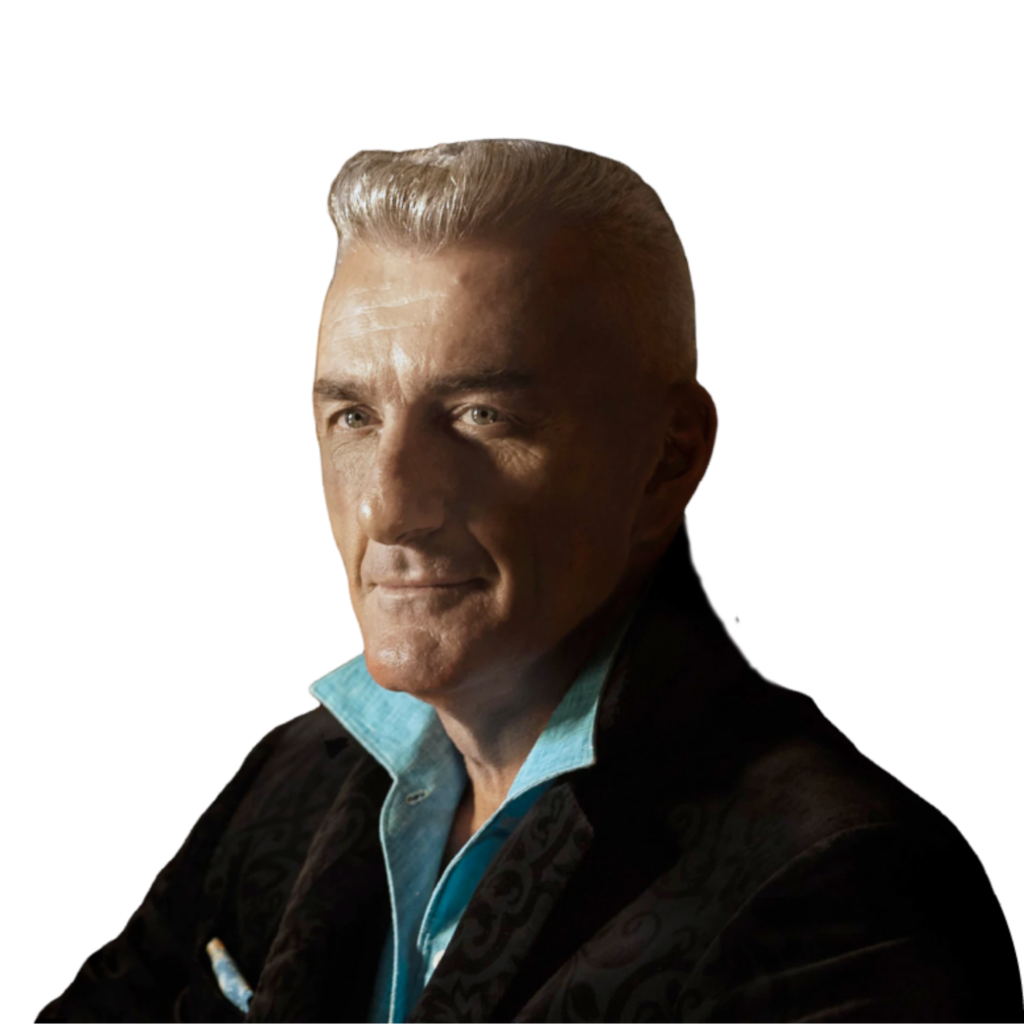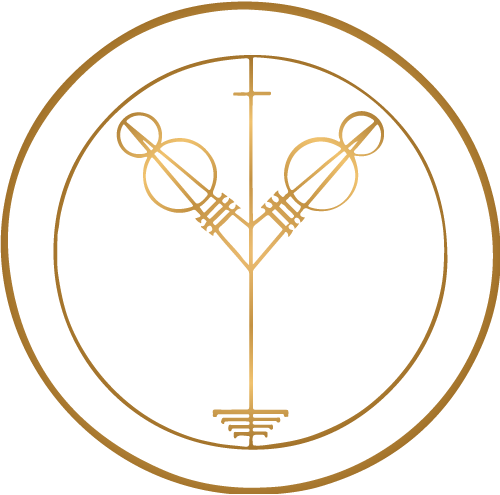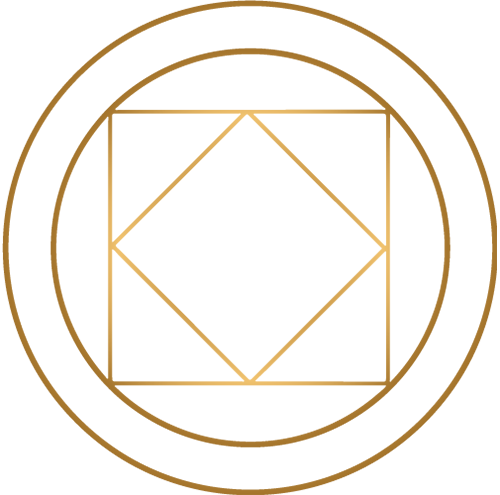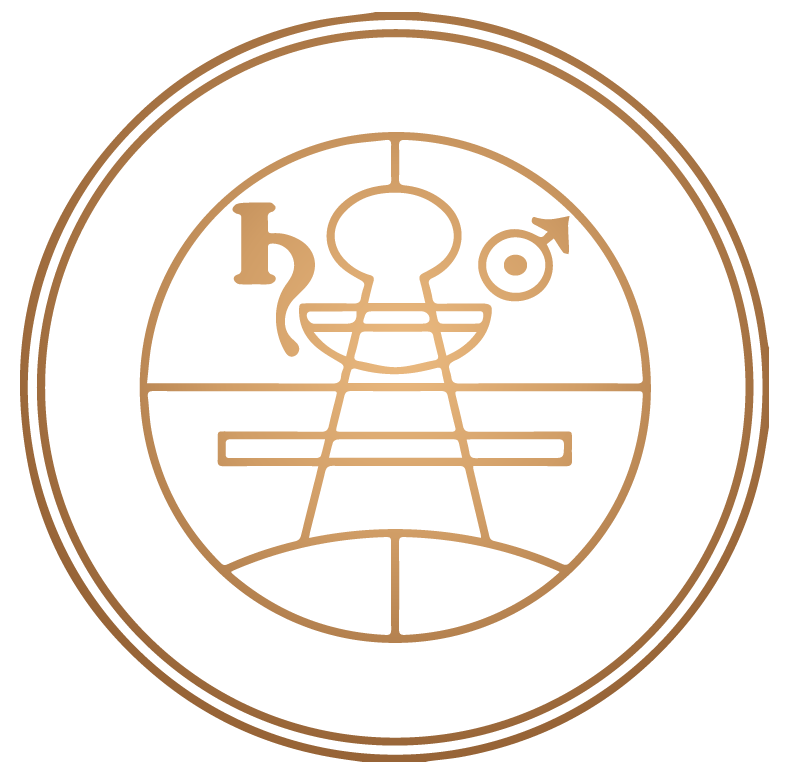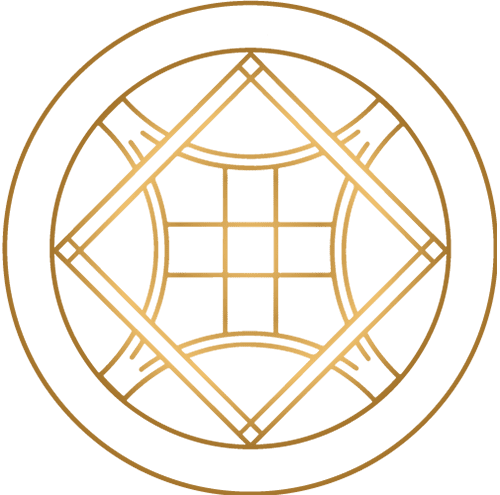Have you felt helpless and difficulty been troubling you for some time? Have you turned to energy therapists or alternative therapists, only to find the solution partial and temporary? Finding a professional spiritual black magic healer with extensive training is not easy, but it is essential for true wellness.
Samuel Zohar Yanai, a spiritual healer and black magic kabbalistic expert, invites you on a transformative journey to free yourself from all blockages. With over 25 years of experience removing negative energy, Samuel offers a discreet and personalized process that does not require physical presence. Healing sessions can be conducted via Zoom or WhatsApp video calls from anywhere, tailored to your unique needs, and suitable for people of all faiths, religions, genders, races, and nationalities.
Why Choose Samuel Zohar Yanai For Spiritual Healing?
1. Extensive Knowledge and Experience
Samuel Zohar is a seasoned spiritual healer who deeply understands true energy healing. He is well-versed in the effects of negative energies on the physical and energetic body, environment, family, and business. Samuel knows how to transform energy and transfer positive energies beneficially and long-term.
2. Expertise in Kabbalistic Knowledge
Samuel utilizes ciphers from the Zohar and Kabbalah to remove blockages and energetic attacks, offering solutions based on ancient wisdom. His energetic code proficiency and esoteric teachings ensure you receive the highest spiritual healing.
3. Holistic and Comprehensive Approach To Spiritual Healing
Samuel’s process includes:
- Energy Healing: Techniques to restore balance and harmony.
- Detoxification: Addressing physical toxins in the body.
- Nutritional Guidance: Advising on vitamins, herbs, and proper nutrition to maintain resilience.
- Business and Personal Coaching: Improving relationships and overall life success.
What to Expect From A Spiritual Healer:
1. Discreet and Isolated Sessions
The healing process is conducted discreetly, usually at night, requiring seclusion to connect with the spiritual world. This method ensures a deep and focused healing experience without needing physical arrival.
2. Ongoing Support Until Complete Solution
Samuel understands that true healing is a journey. He repeats the healing process every 30 days and stays in touch with you until all blockages are entirely removed. Beware of healers who promise instant solutions; comprehensive healing takes time and dedication.
3. Removal of Energetic Vulnerabilities
Samuel specializes in removing curses, evil eyes, ill wishes, and black magic. After eliminating negative energies and blockages, he performs energetic defenses to prevent future attacks.
4. Rekindling Positive Energy Flow
Once the spiritual healing process is over, Samuel reopens blocked positive energy channels, ensuring a continuous flow of beneficial energy in your life.
Take the First Step Towards True Spiritual Healing
Don’t wait any longer to reclaim your wellness. Contact Samuel Zohar Yanai now to start your journey towards balance and harmony. Samuel guides you every step, whether you’re seeking relief from physical ailments, emotional distress, or spiritual blockages.
How to Recognize a True Spiritual Healer
Today, the term “healing” has become looser than ever, with many seeking solutions outside conventional medicine. However, it is essential to distinguish between genuine spiritual healers and those with superficial training or, worse, charlatans.
In-depth Knowledge in Energy and Spirit Healing
A reliable spiritual healer possesses extensive knowledge of negative energies and their effects on the physical and energetic body, environment, family, and business. They should also know how to transform energy and transfer positive energies in a beneficial and long-term way.
Familiarity with the Human Physical Structure
A spiritual healer must have an in-depth understanding of the human body. Addressing toxins in the liver requires both energy therapy and physical detoxification.
Kabbalistic Knowledge
To be considered a true spiritual healer, one must be familiar with esoteric teachings and proficient in energetic codes and ciphers taught in appropriate settings.
Physical and Mental Resilience
A spiritual healer must maintain high mental and spiritual balance and be in good health. An incomplete vessel cannot channel complete energy.
The Power of Spiritual Healing: An In-Depth Exploration
What is Spiritual Healing?
Spiritual healing is a holistic practice involving energy transfer from the healer to the recipient. This energy transfer aims to restore balance and harmony within the individual, promoting self-healing on physical, emotional, and spiritual levels.
Unlike conventional medicine, which primarily focuses on treating symptoms, spiritual healing addresses the root causes of ailments by working on the spiritual aspect of a person’s being.
How Spiritual Healing Works
The spiritual healing process can vary, but it generally involves the healer channeling universal or divine energy through their hands to the recipient. This energy is believed to raise the recipient’s spiritual vibrations, facilitating healing by:
- Relaxing the Body: The energy helps to calm the nervous system, reducing stress and anxiety.
- Releasing Tension: It helps to release physical and emotional blockages that may be causing pain or discomfort.
- Strengthening the Immune System: Spiritual healing can boost the body’s natural defenses by promoting overall balance.
Types of Spiritual Healing Techniques
- Energy Healing: Techniques such as Reiki, Healing Touch, and Pranic Healing focus on channeling energy to the recipient to restore balance.
- Meditation and Visualization: Guided meditations and visualizations can help individuals connect with their inner self and promote self-healing.
- Prayer and Intention: Directing positive thoughts and prayers towards oneself or others can facilitate healing.
- Hands-on Healing: The healer places their hands on or near the recipient’s body to transfer healing energy.
Benefits of Spiritual Healing
Reduces Stress and Anxiety: Many recipients report deep relaxation and inner peace during and after healing sessions.
Alleviates Physical Symptoms: Spiritual healing can alleviate chronic pain, arthritis, migraines, and other ailments.
Enhances Emotional Well-Being: Healing can help release negative emotions such as anger, fear, and sadness, promoting a sense of connectedness and emotional balance.
Boosts Energy Levels: After healing sessions, individuals often feel more energized, balanced, and vibrant.
Promotes Spiritual Growth: Spiritual healing can facilitate personal growth and a deeper connection with one’s higher self or the divine.
Scientific Evidence and Mechanisms
While the exact mechanism of spiritual healing remains unclear, several studies suggest it involves complex bioelectromagnetic interactions. Research has shown that healers can produce measurable low-frequency magnetic fields from their hands, which may influence the recipient’s body.
Other studies have demonstrated changes in brain wave patterns in both healers and recipients during healing sessions, indicating a possible energetic connection.
Electromagnetic Fields: Healers have been found to emit low-frequency magnetic fields from their hands, which are believed to aid in tissue healing.
Brain Wave Synchronization: Electroencephalograms (EEGs) have shown that the brain waves of the healer and recipient can synchronize during a healing session, suggesting an energetic connection.
Distant Healing: Functional Magnetic Resonance Imaging (fMRI) studies have shown brain activity changes in recipients even when healing is sent from a distance, supporting the notion of distant healing.
Challenges in Acceptance of Spiritual Healing
The primary challenge for integrating spiritual healing into modern healthcare is the lack of robust scientific evidence. Many studies have methodological flaws, making it difficult to draw definitive conclusions.
However, anecdotal evidence and smaller studies indicate significant benefits for many individuals. To gain wider acceptance, more rigorous research is needed to explore the mechanisms and effectiveness of spiritual healing.
Spiritual Healing in Modern Healthcare
Spiritual healing is increasingly being recognized as a complementary therapy in healthcare settings. It is practiced in various environments, including:
Healing Centers: Dedicated facilities where individuals can receive healing sessions from trained practitioners.
Charities and Support Programs: Organizations offering complementary therapies for long-term illnesses and mental health conditions, often in collaboration with healthcare providers.
Healthcare Facilities: Some NHS and private healthcare providers, including GP practices, cancer units, hospices, and mental health hospitals, incorporate spiritual healing into their services.
Professional Standards and Training
For spiritual healing to gain credibility and acceptance in modern healthcare, it is essential to maintain high professional standards and rigorous training for healers. Organizations like the NFSH Healing Trust provide comprehensive training programs and adhere to a professional code of conduct to ensure quality and ethical practice.
The Evolution of Spiritual Healing
The 20th Century Spiritual Awakening
In the early sixties of the twentieth century, a significant awakening of spiritual healing began, first through Indian gurus such as the Maharishi Yogi, Osho, and others, who focused on personal healing expressed in the person’s relationship with himself, his truth, and his choices in life.
Spiritual healing took on different dimensions when teachers like Ram Dass (American) came into the picture. He preached kindness and spiritual healing to people and their environment. Renowned heart surgeon Barney Siegel is also known to advocate humor and joy as a method of spiritual healing and apply it to his patients.
Modern Spiritual Healing Practices
Today, there are many healing methods. However, their effectiveness varies. Those who wish to undergo Kabbalistic spiritual healing according to ancient wisdom must find an expert with deep knowledge who can provide a proper solution.
Samuel Zohar Yanai accompanies you in every step and uses ciphers from the Zohar and Kabbalah to remove blockages and attacks and grant spiritual and energetic empowerment.
For many years, Samuel has accompanied many people in Israel and around the world and helped them restore positive energy flow and open blockages in all areas of life. The site awaits you with diverse and fascinating knowledge about the spirit worlds that will enrich your world.
To learn more and arrange a consultation, please leave your details here or contact us on WhatsApp or phone.
How to spiritually heal yourself by Visualizing Healing & Raising Energetic Vibrations
Grounding and Connecting with Divine Light
1 – Ground Yourself: Focus your mind on where the soles of your feet touch the ground. Feel the energy exchange between your feet and the earth, and sense the support of the ground beneath you.
2 – Connect with Your Inner Light: Bring your attention to the energy within you, your Life Force or Soul, even if you cannot see it, feel it, or know it is in your body.
3 – Visualize the Divine Light: Direct your attention upwards into the Universe until you see or sense a distant point of Light – the light of the Divine, a source of peace, love, healing, and joy. Hold the intention of connecting this Divine Light with your Life Force.
4 – Allow the Connection: As the Divine Light flows towards you, allow the connection to happen. Feel, see, or sense this powerful energy entering your Soul, strengthening it and making you feel complete.
5 – Expand the Light: Imagine the Light expanding outwards, filling every cell of your body, nourishing and healing it. Let the Light expand beyond your body, forming a protective sphere around you.
6—Return to Grounding: Bring your attention back to the soles of your feet and feel the connection with the earth. Ground yourself and ensure your energies are appropriate for everyday life.
7 – Practicing: this visualization regularly can raise your energetic vibrations and promote healing from within.
Now, let’s take a minute to talk about the other side of spiritual healing, which is a must if you truly want a clean and free spirit.
Black magic removal, spells, curses, and evil eye cleansing are integral to spiritual healing. Whether inflicted upon you by others or by negativity and black magic, you brought upon yourself with your actions.
Samuel Zohar Yanai: A Real Black Magic Healer
Samuel Zohar Yanai is not only a master of various spiritual healing techniques but also specializes in the complex and often misunderstood area of black magic removal.
With over 25 years of experience, he has helped countless individuals break free from the shackles of spells, negative energies, curses, and evil eyes. His deep understanding and compassionate approach make him a trusted healer in this field.
Whether struggling with unexplained misfortunes, persistent bad luck, or feeling energetically drained, Samuel Zohar Yanai’s expertise can guide you toward reclaiming your peace and balance.
Samuel’s methods are holistic and tailored to each individual’s unique situation. He combines traditional spiritual practices with his extensive knowledge of black magic, Spell removal, and energy work to create a powerful healing experience.
Through personalized sessions, he provides the tools and support needed to cleanse, protect, and empower your spirit, ensuring lasting transformation and harmony.
Spiritual Healing Techniques in Different Cultures
The Spiritual Healer In Jewish Tradition
During the Jewish Golden Age in Spain, many spiritual healers and teachers, including Maimonides and Rabbi Moshe Ben Nachman, used a combination of herbal medicines, strict nutrition plans, and spiritual healing that included encouraging positive thinking and promoting balanced sleep, nutrition, and exercise programs.
A student of the holy Ari, Rabbi Haim Vital also used excursions designed to connect man to nature and use the language of dreams. His healing process included conversations and prayers throughout the hours of the day to provide resilience and physical and mental strength to the patients who contacted him.
Native American Tribes
Healing was a prominent practice in the traditions of native North American tribes. The tribal healer was a spiritual healer who channeled the energies of the universe, such as the light of the sun, the moon, the stars, fire, and water, and used them for healing.
In Central and South America, spiritual healers mainly served kings, priests, and warriors in the Maya, Aztec, and Inca kingdoms, helping them heal diseases and injuries and win battles.
In North American tribal societies, the role of the healer was deeply entrenched in spiritual beliefs. These healers, often referred to as medicine men or women, were not just physical healers but also spiritual guides and community leaders.
They believed in harnessing the energies of the universe, such as the light of the sun, the moon, the stars, and the elements of fire and water, for healing purposes.
Their practices often involved rituals, chants, and the use of sacred objects, which were thought to draw on these natural energies. Herbal medicine was also a significant aspect of their healing practices, as they had an extensive knowledge of the medicinal properties of plants native to their region.
Native American healing rituals
Healing rituals could include sweat lodges, where the combination of heat, steam, and prayer offered physical detoxification and spiritual purification. Totems or spirit animals were also used daily, symbolizing a connection to the spiritual world and the guidance of ancestral spirits.
In the great civilizations of Central and South America, such as the Maya, Aztec, and Inca empires, healers played a vital role. They often served the elite, such as kings, priests, and warriors.
These healers were skilled in various techniques, from herbal remedies to surgical procedures. They were crucial in treating diseases and injuries and preparing leaders and warriors for physical and spiritual battles.
In these cultures, healing was often intertwined with religious and ceremonial practices. Rituals might involve offerings to gods, using psychoactive plants to induce visions or trances, and complex ceremonies that sought the favor of the spiritual world for healing and victory in battles.
In North and South American indigenous cultures, the approach to healing was holistic. It was about treating the body and aligning the spirit with the natural and supernatural world. This deep connection with nature and the spiritual realm reflects a worldview where health and well-being balance physical, emotional, spiritual, and environmental factors.
The legacy of these ancient healing practices continues to influence modern holistic medicine. It offers a unique perspective on health and healing that emphasizes harmony with the natural world and the interconnectedness of all aspects of life.
Historical and Cultural Perspectives on Spiritual Healing
Spiritual Healing in Ancient Cultures
India
The spiritual tradition of India dates back 5000 years. According to this tradition, a universal energy named Prana is interwoven throughout the universe and drives everything. According to all religions and spiritual approaches originating in India, from Hinduism and Jainism to Buddhism, the prana is an essential tool for healers.
With its help, diseases, physical and mental weakness, and insanity can be treated.
In Hindu culture, the practice of Ayurveda is a significant testament to the deep-rooted belief in holistic healing.
This ancient system, deeply intertwined with spiritual principles, utilizes a blend of energy work and plant-based remedies to promote health and treat diseases. Ayurveda, meaning “the science of life” in Sanskrit, is a medical practice and a way of life emphasizing the balance of body, mind, and spirit.
This healing tradition is deeply connected to Hinduism’s philosophical and spiritual teachings. It incorporates understanding the five elements (earth, water, fire, air, and ether) and the three doshas (Vata, Pitta, and Kapha), which are fundamental energy types believed to be present in every individual. Ayurvedic treatments involve dietary changes, herbal remedies, yoga, meditation, and other practices to restore balance to these energies within the body.
Ancient Indian Spiritual Healers
Tales from Hindu and Buddhist traditions speak of healers and yogis who wandered through villages and cities, offering healing services. These healers, often revered for their deep spiritual insight and mastery over their bodies and minds, employed a unique combination of physical touch and insightful conversations to effect healing.
This approach was about treating physical ailments and addressing the emotional and spiritual imbalances believed to contribute to the illness.
The healers’ methods were deeply personalized, considering the individual’s unique constitution and life circumstances. This holistic approach is a hallmark of Ayurveda, reflecting an understanding that true healing involves the whole person and not just the disease symptoms.
In addition to Ayurveda, Yoga, another integral part of Hindu culture, contributes to this holistic view of health. As a spiritual practice, yoga encompasses physical postures, breath control, and meditation, promoting physical strength, flexibility, and mental clarity. It’s often used with Ayurvedic principles to maintain health and prevent disease.
China
Since at least 3000 BC, China has believed in the vital energy known as Chi. Like Prana, Chi is perceived as the energy in everything and drives everything. Chi has two opposite elements: yin (the dark side) and yang (the bright side).
As long as these two forces are balanced, health prevails in the body and mind. However, when this balance is hindered, illness occurs. Yin and yang, therefore, were used as essential tools by every Chinese spiritual healer, usually a priest, monk, medicine man, or spiritual or martial arts teacher.
The Chinese healer worked to promote balance through these methods among all human beings—from farmers to warriors.
Chinese medicine healing
In Chinese medicine, including folk medicine, many spiritual techniques involving Chi (yin and yang—male and female) were pervasive in improving health and treating various diseases.
Central to this tradition is the concept of Chi (Qi), the vital life force that flows through all living beings. This concept is intricately linked to the principles of Yin and Yang, representing the dualistic nature of existence – Yin being the passive, feminine aspect, and Yang the active, masculine counterpart. The balance of these forces is considered crucial in maintaining health and treating diseases.
Traditional Chinese Medicine (TCM) encompasses many practices, including acupuncture, herbal medicine, tai chi, qigong, and dietary therapy.
These practices are founded on the belief that the human body is a microcosm of the larger surrounding universe, interconnected with nature and subject to its forces. Health, in TCM, is perceived as a harmonious interaction between these forces within the body and the external environment.
Acupuncture, one of the most well-known practices of TCM, involves the insertion of fine needles into specific points on the body to regulate the flow of Chi. This technique treats various conditions, from chronic pain to digestive disorders. Similarly, herbal medicine in TCM involves using natural substances—plants, minerals, and occasionally animal products—to restore the body’s Yin and Yang balance.
Qigong and Tai Chi
Qigong and Tai Chi combine movement, meditation, and controlled breathing to enhance the flow of Chi in the body, promoting physical and mental well-being. These exercises are considered beneficial for health and practiced as spiritual cultivation, aligning the practitioner with the universe’s rhythms.
In addition to these practices, dietary therapy in TCM is based on the principle that food, like medicine, affects the balance of Yin and Yang in the body. Foods are classified according to their energetic qualities and are used to treat imbalances and prevent illness.
Spiritual Healing In Islam
In Islamic tradition, particularly within Sufism, the mystical branch of Islam, there has been a rich history of spiritual healers and healing practices, including witch doctors. Sufis, known for their deep spirituality and devotion, often follow the teachings of revered mystics like Jalal al-Din al-Rumi.
These practices not only addressed physical ailments but also placed a strong emphasis on mental and emotional well-being, treating conditions like depression and anxiety.
The Sufi approach to healing is holistic, considering the interconnectedness of body, mind, and spirit. Central to this is the practice of dhikr, the remembrance of God, often conducted through meditative techniques and chants.
This spiritual practice cleanses the heart and soul, fostering peace and connection with the divine. The contemplative aspect of dhikr helps calm the mind and reduce stress, which can directly impact mental health.
Sufi spiritual healers
Another significant element in Sufi healing practices is the Sema, or ecstatic dance, most famously exemplified by the whirling dervishes. This ritual, characterized by spinning and rhythmic movement, is not just a form of artistic expression but a profound spiritual practice. It symbolizes the revolving of the human soul around the divine truth and is thought to lead to a state of spiritual ecstasy where healing can occur.
Spiritual healing and fasting
Fasting, another critical aspect of Sufi practice, is a religious obligation during Ramadan and a method of purification and self-discipline. By abstaining from physical nourishment, practitioners believe they can achieve greater spiritual clarity and health.
Study and contemplation of sacred texts, including the Quran and Rumi’s poetry, are also integral to the Sufi healing process. These texts provide deep insights into the nature of existence, pain, suffering, and the pathway to spiritual and emotional healing.
With its rich meditation, music, dance, fasting, and study traditions, Sufism offers a unique perspective on healing that transcends the physical and delves deep into the psychological and spiritual realms.
This approach is not only about curing diseases but about achieving a state of holistic well-being, aligning oneself with the rhythm of the cosmos and the will of the Divine.
The Spiritual Healer in Christianity
Healing in Christianity has evolved significantly over the centuries, intertwining with various beliefs and practices. Initially, the Catholic monks often took the lead in offering care to the poor and sick.
Their approach sometimes incorporated mystical energies, a practice not universally accepted by the church hierarchy. This tension highlighted a broader debate within Christianity about the nature of spiritual healing and its place within the ecclesiastical structure.
The church’s skepticism toward these healing practices stemmed partly from a concern about undermining the authority and status of priests.
The church traditionally held a strict view on spiritual matters, including healing, which was seen as a divine intervention rather than a human endeavor. However, despite the church’s apprehension, these healing practices continued, reflecting a deep-seated human desire for physical and spiritual relief.
The spiritual healing movement in the U.S
In the 19th century, Christian spiritual healing expanded significantly in the United States, partly due to the rise of new religious movements and revivals. This period saw a growing acceptance of the idea that faith and prayer could directly influence physical health. The concept of “faith healing,” where prayer and belief in God’s power are crucial to overcoming illness, gained popularity.
This expansion also coincided with a greater openness to ideas from different spiritual traditions, including those outside mainstream Christianity.
Jesus Christ as a spiritual healer
In the teachings and accounts of Jesus Christ within Christian tradition, it’s often emphasized that his approach to healing was holistic, addressing individuals’ spiritual and physical needs. When Jesus cared for the lepers, the sick, and others needing healing, he first attended to their spiritual well-being before addressing their physical ailments.
This approach is exemplified in numerous accounts in the New Testament. For example, before healing a paralyzed man, Jesus first forgave his sins, demonstrating his concern for his spiritual state (Mark 2:5). This action underlines the belief that physical and spiritual health are deeply interconnected.
Today, the landscape of Christian healing is diverse, ranging from traditional prayer and sacraments to more unconventional methods influenced by other spiritual traditions.
This diversity reflects the broad spectrum of belief within Christianity and a more comprehensive cultural openness to different forms of spiritual practice. As individuals like Yanai demonstrate, searching for healing can often lead to blending traditions, creating new pathways for those seeking relief and restoration.
In Jesus’ ministry, healing the sick wasn’t just about curing physical symptoms and restoring individuals to full participation in their community and spiritual life.
In the case of lepers, who were marginalized and ostracized due to their condition, Jesus’ healing extended beyond physical cure to social and spiritual restoration. He relieved their physical suffering by healing them, breaking down social barriers, and reinstating them into society.
Furthermore, Jesus’ acts of healing were often accompanied by teachings that provided spiritual insights and guidance. His miracles demonstrated compassion and illustrated deeper spiritual truths and the coming of God’s kingdom.
Start Your Spiritual Healing Journey Today
A spiritual healer offers a unique approach to health and well-being, addressing individuals’ physical, emotional, and spiritual aspects. While more research is needed to fully understand its mechanisms and benefits, the growing body of anecdotal evidence and patient testimonials highlights its potential value. Integrating spiritual healing into modern healthcare could provide a holistic option for those seeking balance and harmony.
Ready to transform your life and experience the profound benefits of spiritual healing? Contact Samuel Zohar Yanai today. Visit the website, connect on WhatsApp, or call for more information and to schedule your personalized consultation. Let Samuel guide you on your journey to wellness and balance.

